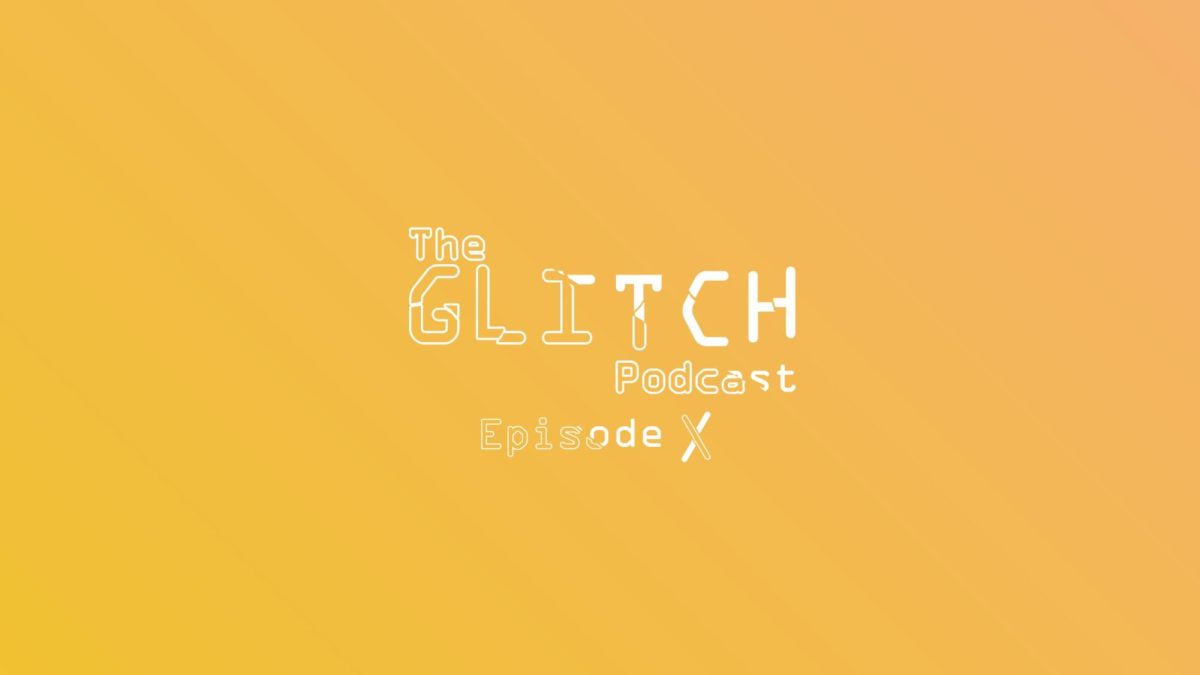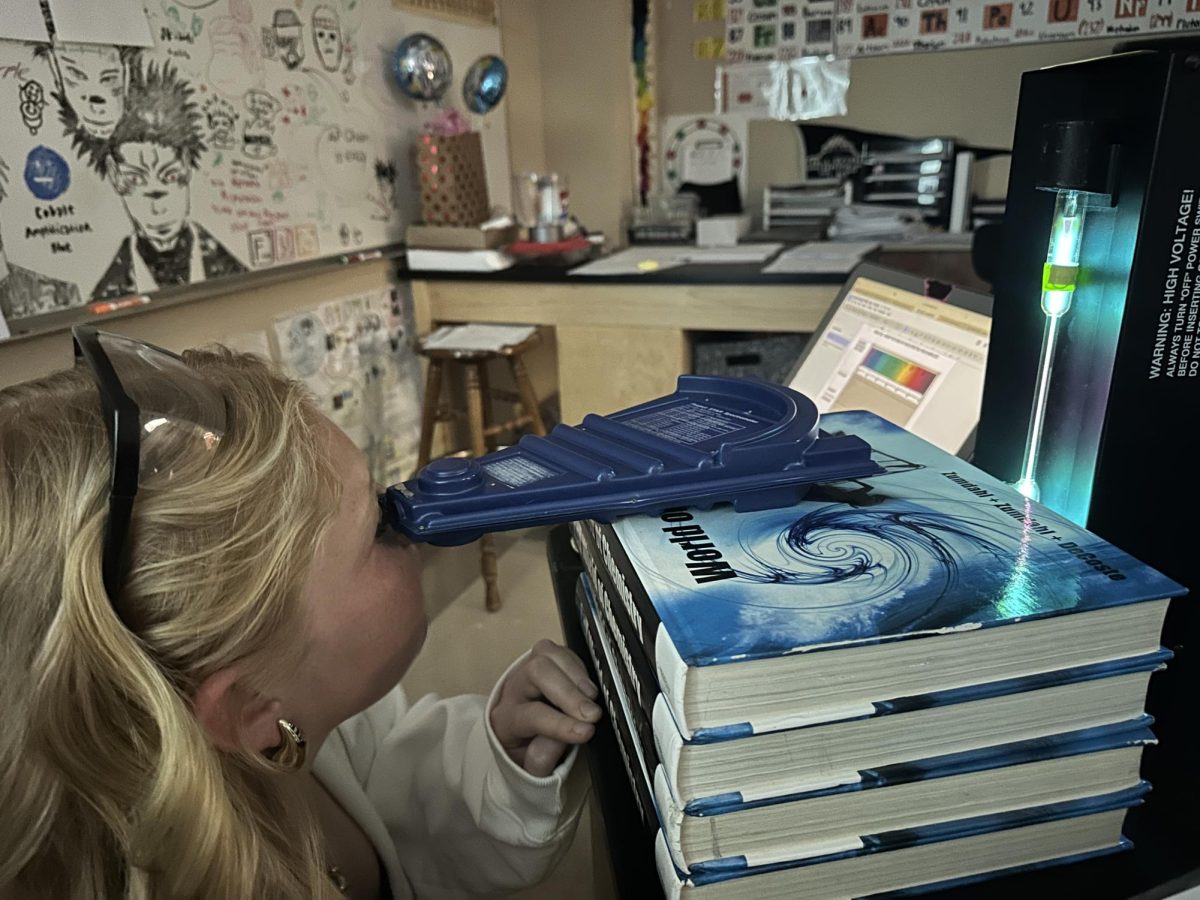In an everyday scenario, teachers would persuade students to not play with fire. However on Nov. 8 and Nov. 12, teachers encouraged their students to explore different elements using a bunsen burner. Prior to the lab, students in Ms. Reilly’s Chemistry Honors classes learned about electrons and how they move from the ground state up to the excited state and back down to produce energy in which the excess energy releases light.
Furthermore, students used spectral tubes, gas filled tubes that are inserted into an energy source, to examine a band of colors known as the atomic line spectra.These bands can be seen by using a spectroscope, an instrument that creates an emission spectra showing all of the possible photons of light that are released as the electrons return back down to the ground state.
“We prepared for the lab by having an understanding of how elements give off different colors of light because of how the line-emission spectrum works,” Mackenzie Jones ‘27 said.
Additionally, students were instructed to find the approximate wavelength based off of what color the elements burned during the flame test. By sticking a dowel covered in an element into a bunsen burner, students were able to explore which metal elements turned orange and which turned red.
“I liked the chem lab because we were able to see how certain elements reacted when energy was added. Many of the flames were unique colors when the metals were added,” Addison Evert ‘27 said.
By incorporating this type of lab into everyday learning, it engages student’s’ minds and helps them understand the material in a unique and hands-on setting rather than on a lab bench taking notes.
“I thought the lab was interesting and made me more engaged and interested in learning more in Chemistry,” Sofia Zapparoli ‘27 said. “I would like to do [this] type of learning over notes because it’s more hands-on and fun.”
In addition to the spectroscopy lab, chemistry classes also participated in a mold day lab, a particles in a bag lab and a density lab. These labs are beneficial for students because they provide ways for students to experiment with chemicals and elements in a controlled laboratory environment.
“I thought the chem lab was cool because I was able to burn metals and see the colors they emitted,” Aiden Jang ‘27 said.



![Minutes before the Activities Fair in the gym, president Abhi Gowda ‘26 prepares the stall for his club Helping Hands, Sept. 4. A relatively new club, Helping Hands was co-started by Gowda and focuses on assisting the homeless, and just last year they succeeded in raising a couple hundred donations to send to shelters. This year, they have goals to expand, with hopes to increase volunteer opportunities and take in-person trips to shelters, as well as extend their help beyond just homeless people. “The Activities Fair gives a lot of underclassmen the opportunity to really get to know the Canyon culture, and it gives them many opportunities for service and volunteering,” Gowda said. “[Through the Activities Fair,] I hope to find a bunch of new and passionate members about our club and just get our name out there and spread awareness to the cause that we’re fighting for.”](https://rockmediaonline.org/wp-content/uploads/2025/09/1-2-1200x885.jpg)







![The winter guard team makes fifth place at the state championship finals in the Denver Coliseum, March 30. The team performed to Barnes Country's “Glitter and Gold,” lead by coaches Margo Sanford, Blair Bickerton and Anna Orgren. In their class there were a total of nine groups participating, and the top five who made it to finals received a plaque. “[Walking onto the stage] is very nerve-wracking, but also very exciting as well. When you first start color guard there's a lot of anxiety and uncertainty when you first perform in front of an audience, but once you've done it for a while, it starts to become the best part of the season,” Ella West ‘25 said. “It's very fulfilling to see an audience react to something you've put your heart and soul into.”](https://rockmediaonline.org/wp-content/uploads/2025/04/Both-socal-media-nd-website-main-1-1200x846.jpg)


![April marks the 25th anniversary of Sexual Assault Awareness Month, created by the National Sexual Violence Resource Center (NSVRC). This month is to spread awareness of the harassment, assault and abuse that happens around the world. The symbol that represented the month was a teal ribbon; however, some survivors of assault create different symbols and movements like the TikTok trend in 2022, where survivors would tattoo Medusa on their body, in honor of her backstory in Greek Mythology. “I don't think [this month is known] at all. I rarely see anybody talk about it. I rarely see much of an emphasis on posting it online, or much discussion about it, and I feel like there needs to be way more discussion,” an anonymous source said. “I think just validating every experience that a person has gone through, regardless of the degree of it, the severity, is an essential step into making sure that people are aware that this is a very real problem in a society and that we need to do better in addressing it.”](https://rockmediaonline.org/wp-content/uploads/2025/04/IMG_0011-1200x900.jpg)

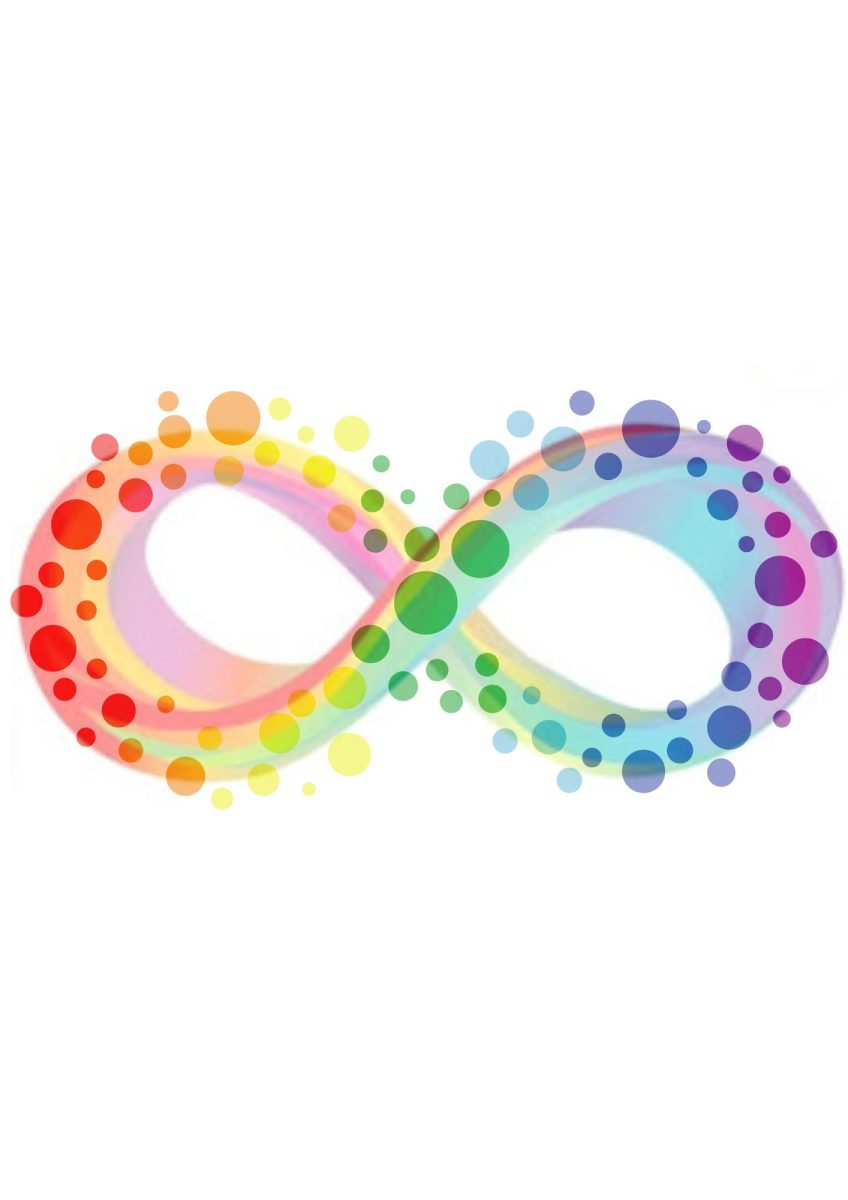
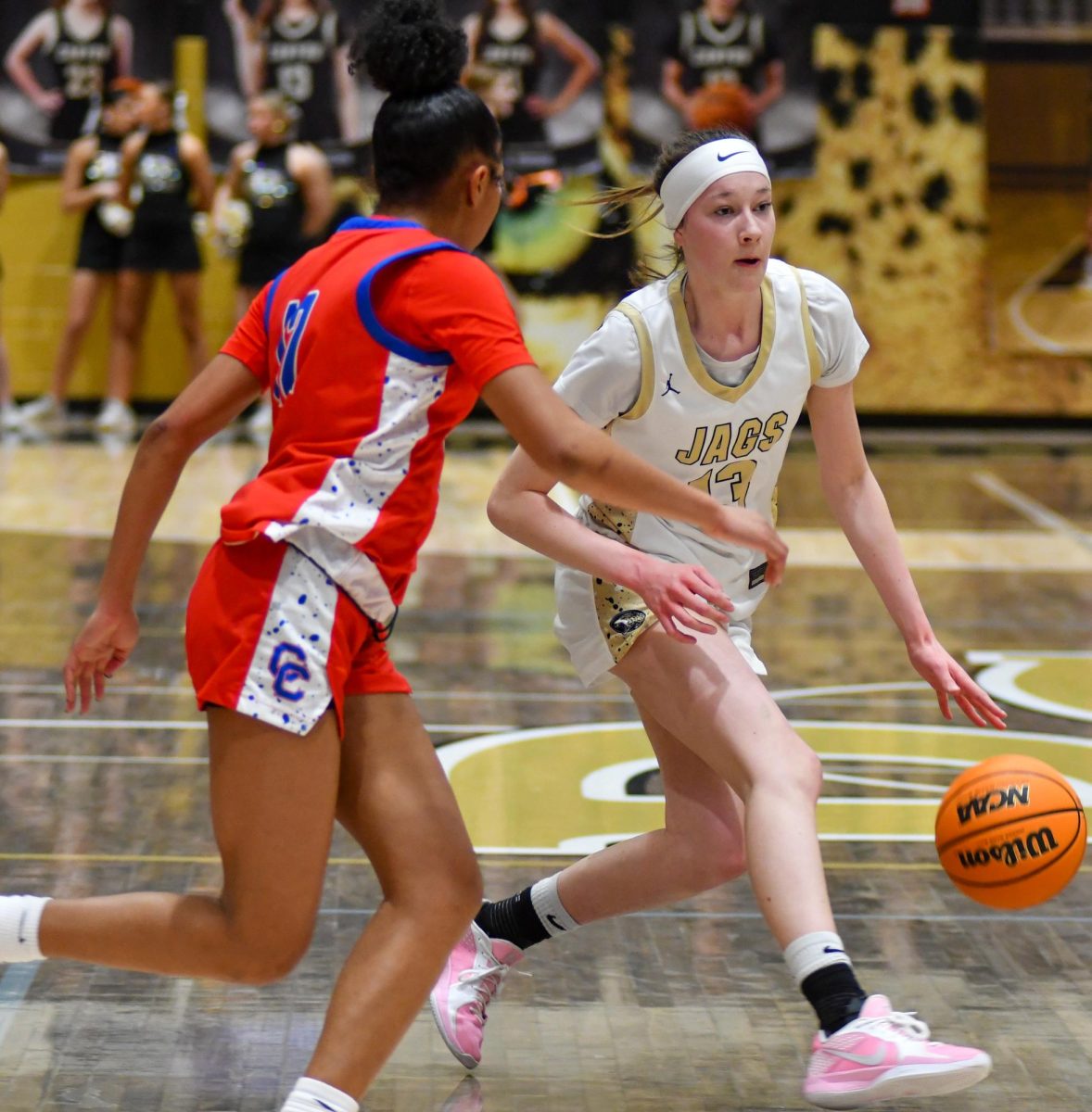

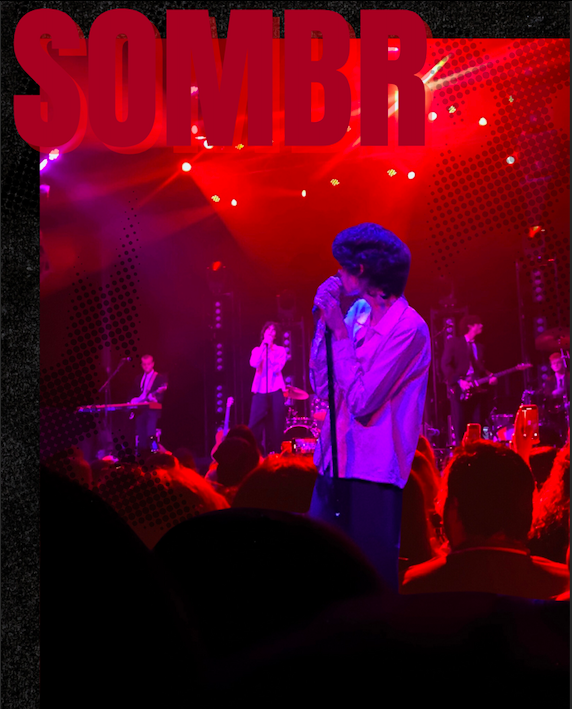








![Lesbian Visibility Day is April 26, and it’s a holiday to celebrate the lesbian community of the world. Lesbian Visibility day was established in 2008 by many queer activists and organizations who sought to raise more awareness for lesbian history and culture. “So this is why during Lesbian Visibility [Day] we celebrate and center all lesbians, both cis and trans, while also showing solidarity with all LGBTQ+ women and nonbinary people,” Linda Reily, in an article written by her, said.](https://rockmediaonline.org/wp-content/uploads/2025/04/Lesbian-Visibility-day.jpeg)



